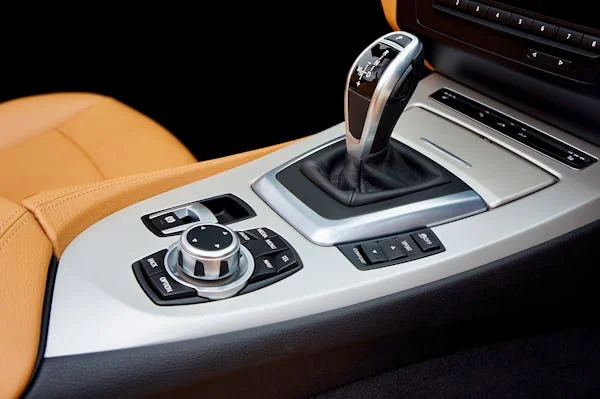Introduction
Automatic transmissions have become a standard feature in most modern vehicles, simplifying the driving experience by eliminating the need for manual gear shifting. One of the key components of an automatic transmission is the PRNDOT configuration, which includes six distinct settings: Park (P), Reverse (R), Neutral (N), Drive (D), Overdrive (O), and Throttle (T). Each of these settings plays a crucial role in the vehicle’s performance, providing the driver with full control over the car’s movement, speed, and fuel efficiency. Understanding how to properly use and maintain these settings is essential for both safety and optimal vehicle operation. This guide will provide an in-depth exploration of each PRNDOT component, offering valuable insights into their functions, common misconceptions, and maintenance tips, ensuring that you can make the most out of your automatic transmission system.
Detailed Breakdown of PRNDOT Components
Park (P)
- Function: Locks the transmission, preventing the vehicle from moving.
- Usage: Engage when the vehicle is stationary and turned off.
- Note: Always use the parking brake in conjunction with Park, especially on inclines, to prevent transmission strain.
Reverse (R)
- Function: Engages the reverse gear, allowing the vehicle to move backward.
- Usage: Use when backing out of parking spaces or reversing.
- Caution: Ensure the vehicle is at a complete stop before shifting into Reverse to avoid transmission damage.
Neutral (N)
- Function: Disengages the transmission, allowing the vehicle to roll freely.
- Usage: Useful during towing or when idling for extended periods.
- Caution: Avoid coasting in Neutral, especially downhill, as it reduces control over the vehicle.
Drive (D)
- Function: Engages the forward gears for normal driving.
- Usage: Use for regular driving conditions.
- Note: The transmission automatically shifts through gears based on speed and load.
Overdrive (O)
- Function: Allows the engine to operate at lower RPMs at higher speeds, improving fuel efficiency.
- Usage: Ideal for highway cruising.
- Note: Engaging Overdrive reduces engine wear and fuel consumption during sustained high-speed driving.
Throttle (T)
- Function: Controls the engine’s power output, affecting acceleration and speed.
- Usage: Modulate the throttle for smooth acceleration and deceleration.
- Note: Gradual throttle application enhances fuel efficiency and reduces mechanical stress.
Evolution of Automatic Transmissions
Automatic transmissions have undergone significant advancements since their inception. Early models were mechanically controlled with limited gear options. Modern transmissions incorporate electronic controls, offering smoother shifts, improved fuel efficiency, and adaptive learning capabilities that adjust to driving habits.
Role of Electronics in Modern Transmissions
Electronic Control Units (ECUs) play a pivotal role in modern automatic transmissions. They monitor various parameters such as vehicle speed, engine load, and throttle position to determine optimal gear shifts. This integration enhances performance, fuel efficiency, and driving comfort.
Fuel Efficiency and PRNDOT
Proper use of PRNDOT components can significantly impact fuel consumption:
- Drive (D): Maintains optimal gear ratios for city driving.
- Overdrive (O): Reduces engine RPM at higher speeds, conserving fuel.
- Throttle (T): Smooth acceleration and deceleration prevent unnecessary fuel usage.
Understanding and utilizing these components effectively contributes to better fuel economy.
Common Misconceptions About PRNDOT
- Coasting in Neutral Saves Fuel: Modern engines are designed to cut fuel supply during deceleration in gear, making coasting in Neutral less efficient and potentially unsafe.
- Overdrive Should Only Be Used at High Speeds: Overdrive is beneficial at moderate highway speeds, not exclusively at high speeds.
- Using Park Alone Secures the Vehicle: Relying solely on Park can stress the transmission; the parking brake should always be engaged.
Practical Tips for Using PRNDOT
- Starting the Vehicle: Ensure the gear is in Park (P) before starting the engine.
- Shifting Gears: Always come to a complete stop before shifting between Drive (D) and Reverse (R).
- Using Overdrive: Engage Overdrive (O) during highway driving to improve fuel efficiency.
- Throttle Control: Apply the throttle smoothly to maintain control and conserve fuel.
Maintenance of the Transmission System
Regular maintenance ensures the longevity and optimal performance of the transmission system. Key maintenance tasks include:
- Transmission Fluid Check: Regularly inspect fluid levels to prevent overheating and ensure smooth operation.
- Changing the Fluid: Replace the transmission fluid periodically as recommended by the manufacturer.
- Inspecting the Transmission Filter: Ensure the filter is clean to prevent debris from clogging the transmission system.
- Monitor for Leaks: Check for fluid leaks regularly and address them immediately to avoid major transmission issues.
Future of PRNDOT in Automotive Technology
As the automotive industry evolves, PRNDOT may undergo further changes. Advanced technologies such as continuously variable transmissions (CVT) and dual-clutch systems are gaining popularity, offering smoother shifting and improved fuel efficiency. In the future, we may see more vehicles adopting fully automated and electronic transmission systems, eliminating the need for traditional gear controls altogether.
Conclusion
PRNDOT is an integral part of the automatic transmission system, providing the driver with control over the vehicle’s movement. Understanding the functions of Park, Reverse, Neutral, Drive, Overdrive, and Throttle is essential for safe and efficient vehicle operation. By following the correct procedures and maintenance tips, drivers can extend the life of their transmission and improve fuel efficiency. As automotive technology advances, the future of PRNDOT will likely see innovations that further enhance driving comfort and vehicle performance.
FAQs
What does PRNDOT stand for in a car?
PRNDOT stands for Park (P), Reverse (R), Neutral (N), Drive (D), Overdrive (O), and Throttle (T), which are the key settings in an automatic transmission.
When should I use the Park (P) setting?
Use the Park (P) setting when your vehicle is stationary and you want to secure the car, preventing any movement. Always engage the parking brake as well.
Can I shift directly from Drive (D) to Reverse (R)?
No, it’s important to come to a complete stop before shifting from Drive (D) to Reverse (R) to avoid damaging the transmission.
Is Overdrive (O) necessary for all driving conditions?
Overdrive (O) is best used for highway driving at higher speeds, as it reduces engine RPM and improves fuel efficiency.
Should I leave my car in Neutral (N) while idling?
It’s not recommended to leave the vehicle in Neutral (N) while idling, as it can lead to loss of control and unnecessary fuel consumption.






